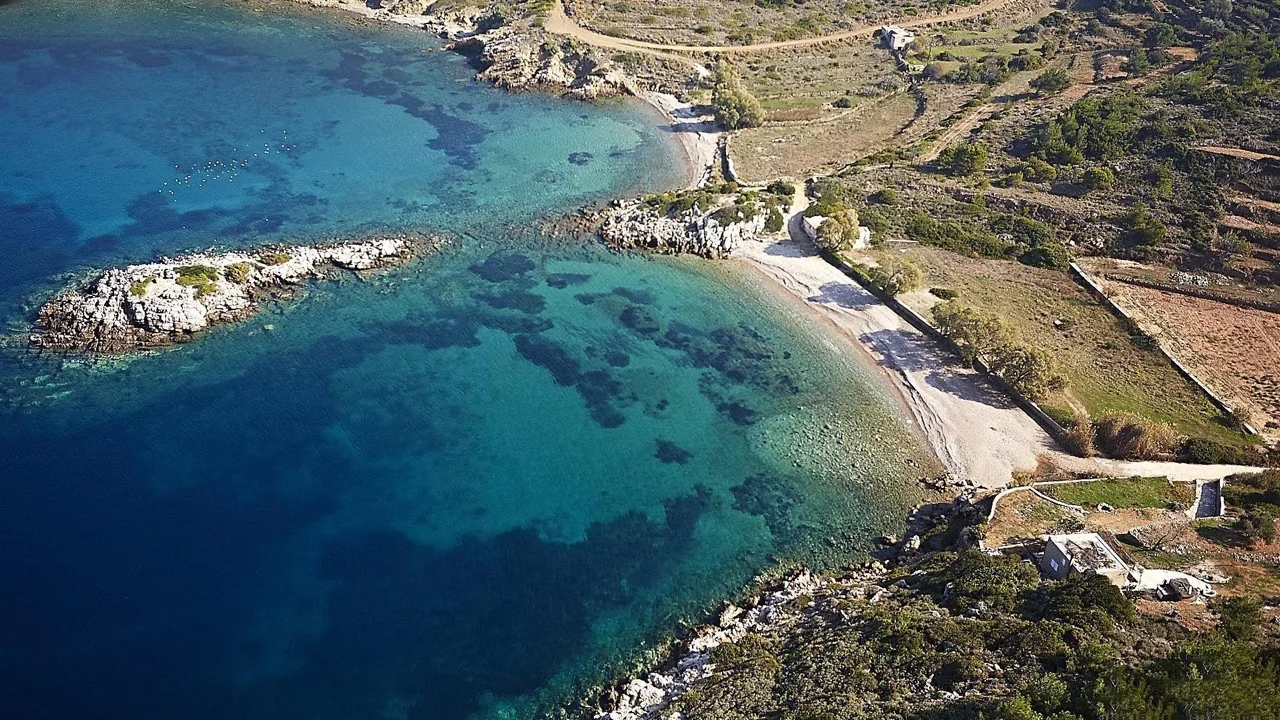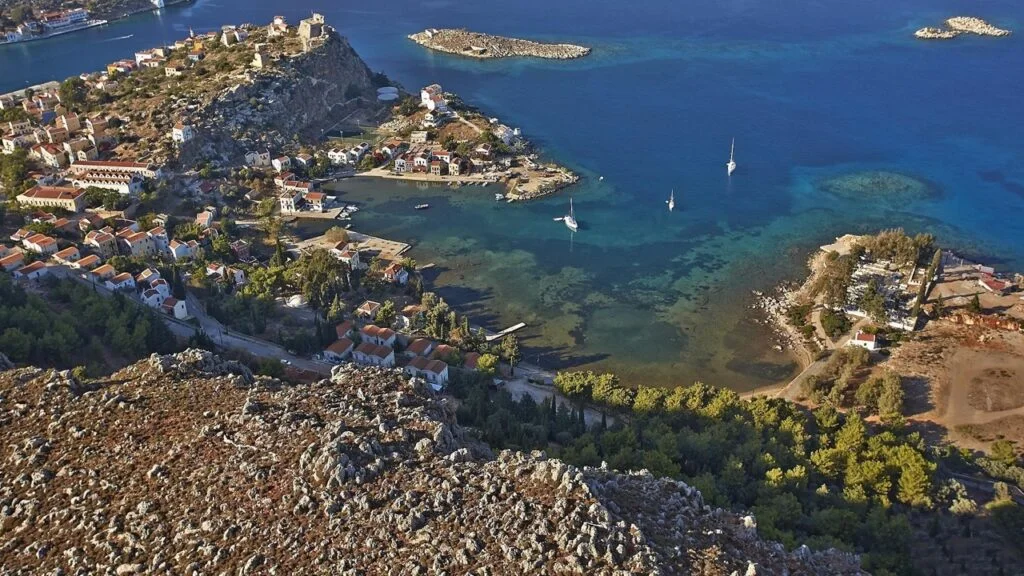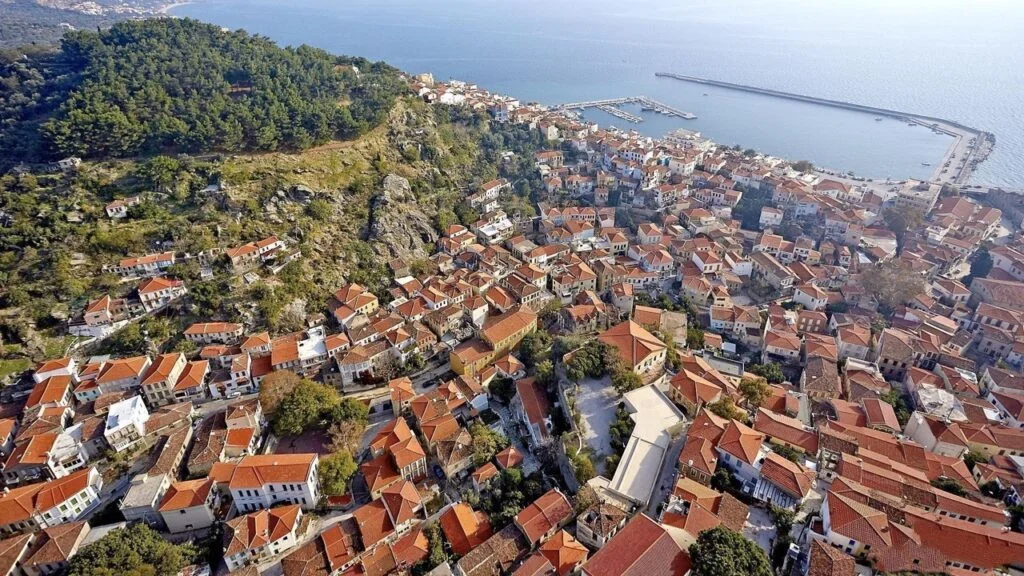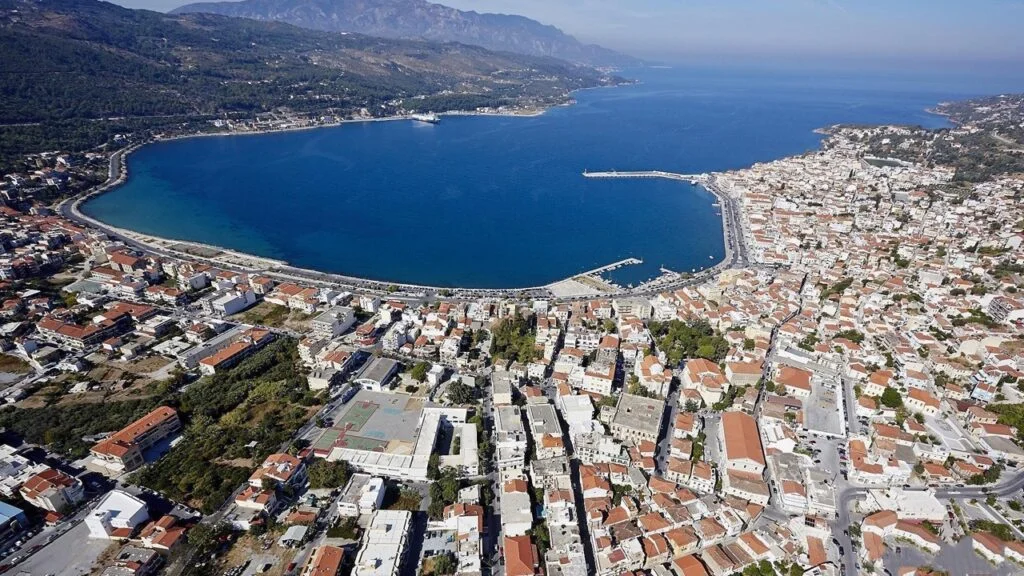NORTH-EASTERN AEGEAN ISLANDS
The North-Eastern Aegean islands are grouped more for convenience than for any historical, geographical, or administrative reason. Apart from Thasos and Samothraki, they are like the Dodecanese much closer to Turkiye than to the Greek mainland. Unlike the Dodecanese, the islands are not close to one another. Although these islands are less visited than either the Dodecanese or the Cyclades. Scenically they also differ from these groups. Mountainous, green, and mantled with forests, they are ideal for hiking but most are also blessed with long stretches of delightful beaches. Some of the North-Eastern Aegean islands also boast important ancient sites.
CHIOS
Chios is a large island covering 859 square km. It is separated from the Turkish Karaburun Peninsula by the 8km wide Chios Straits. The mastic villages of the south and their role as a stepping stone to Turkey is what primarily brings travelers to Chios. The town of Chios on the east coast is the island’s port and capital. It’s a large settlement home to almost half of the island’s inhabitants. The atmospheric old quarter, with many Turkish houses built around a Genoese castle, and the lively market area are both worth the stroll. Visit the Nea Moni Monastery (World-Heritage listed), the Philip Argenti Museum with the Korais Library, Anavatos the abandoned ghost village, the unique Pyrgi village, and many churches and caves.

IKARIA
Ikaria is a rocky and mountainous island that is fertile, with an abundance of cypress trees, pine forests, and olive and fruit trees. The name Ikaria originates from the mythical Icarus. Another myth ascribes the island as the birthplace of Dionysos, the Greek god of wine, fruitfulness, and vegetation. Ikaria’s beaches at Livadia and Mesahti, near Armenistis on the north coast, are rated as the best in Greece. The Stone Houses, Agia Irini, the island’s oldest church, the Temple of Artemis, the Byzantine Castle of Koskina, and the Tower of Drakano are interesting sites on the island. The radioactive hot springs of Ikaria have been known for their healing properties since ancient times and attract many visitors. No wonder the locals are known for their longevity!

KASTELLORIZO
Kastellorizo is so-named for the ‘red castle’ that once dominated the main port but is also known as ‘Megisti’ meaning the largest. It is the largest of a group of 14 islets. There are no stunning beaches, but there are rocky inlets from where you can swim, cliff dive, and snorkel. The most spectacular ‘Blue Cave’ of Kastellorizo is known for its rich collection of stalactites. The island featured in the Oscar-winning Italian film Mediterraneo (1991) which made it favored and known for its harbor. On top of the hill stands the Knights of Saint John Castle (Castello Rosso) with nearby the Lycian Tomb. Moni Agiou Georgiou and Moni Agiou Stefanou are beautiful monasteries worth visiting. Do not forget the island’s ancient capital of Paleokastro. Within its Hellenistic walls are an ancient tower, a water cistern, and three churches waiting to be explored.

LESBOS
Lesbos is the third largest island in Greece. Most Greeks call the island Mytilini, also the name of the capital. Lesbos produces the best olive oil in Greece and has many olive oil refineries. Aside from olive oil, the island is famous for its Ouzo, its sardines, and Ladotyri (sheep’s milk cheese). Lesvos has some nice trekking trails in the north and south and is the transit point and home to over 279 species of birds ranging from raptors to waders. In July and August, the villages of Lesbos hold Festivals in honor of their church. The island offers many sights like Mytilini’s imposing castle, the Dome of the Church of Agios Therapon, Theophilos Museum and Teriade Museum, many hot springs, the Genoese Castle, Panagia Glykophilousa Church, the Petrified Forest, and many beautiful beaches.

SAMOS
Samos is the closest of all the Greek islands to Turkey and at the same time is the most visited island in the Aegean Group. Samos has three ports: Vathy and Karlovasi on the north coast, and Pythagorio on the south coast. The island counts around 45 hiking paths due to its natural fecundity and appealing combination of mountains and sea. The Ireon is a UNESCO World Heritage Site along with Pythagoreion. In the area of Polykratous, you can find the Evpalinos Tunnel, Moni Panagias Spilianis monastery, the Castle of Lykourgos Logothetis, Pythagorio Museum, and the ruins of Aphrodite. The fishing village of Kokkari is favored by windsurfers and attracts many tourists. Not only Kokkari, Livadaki, Lemonakia, Psili Ammos and Tsamadou are loved beaches of Samos.

